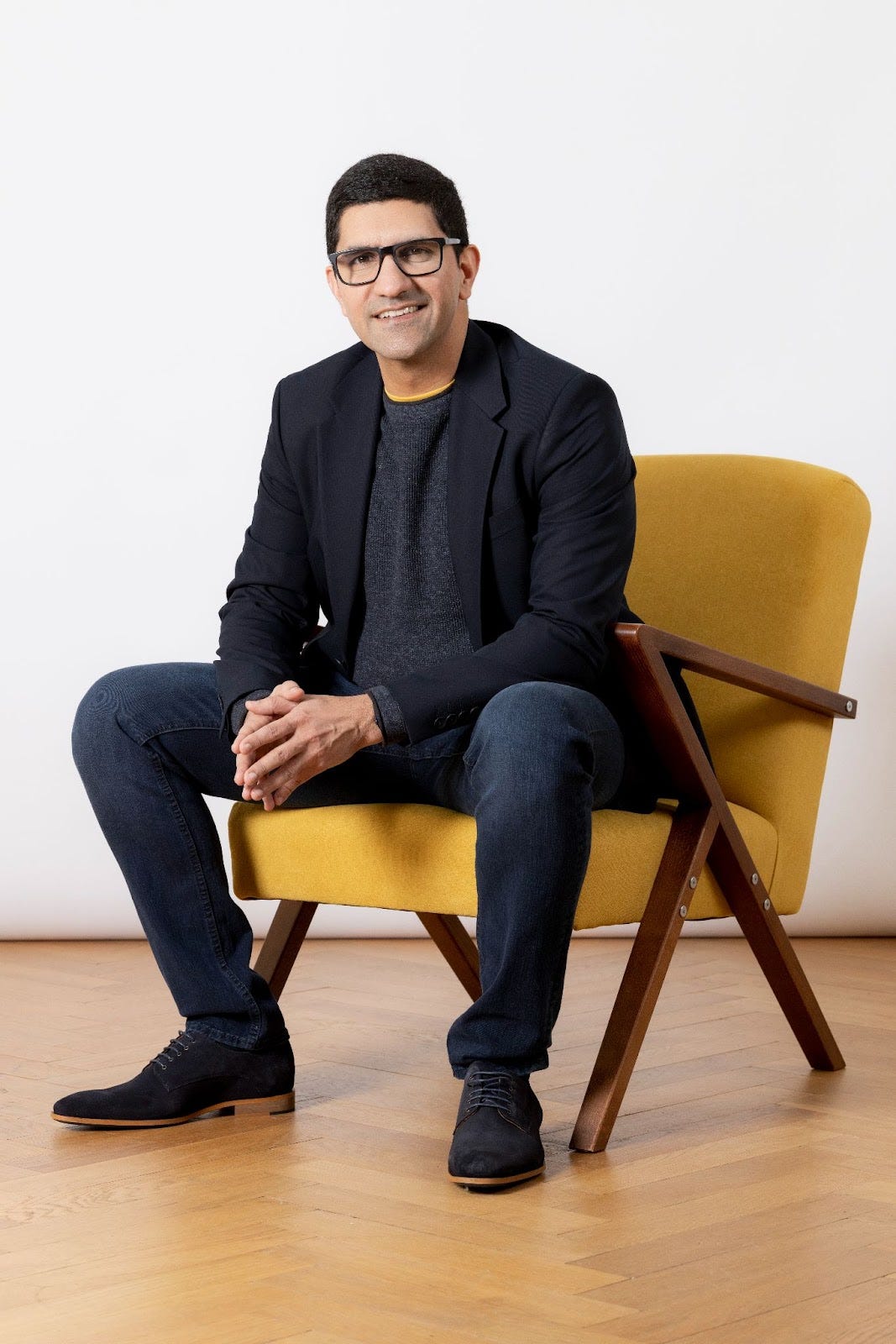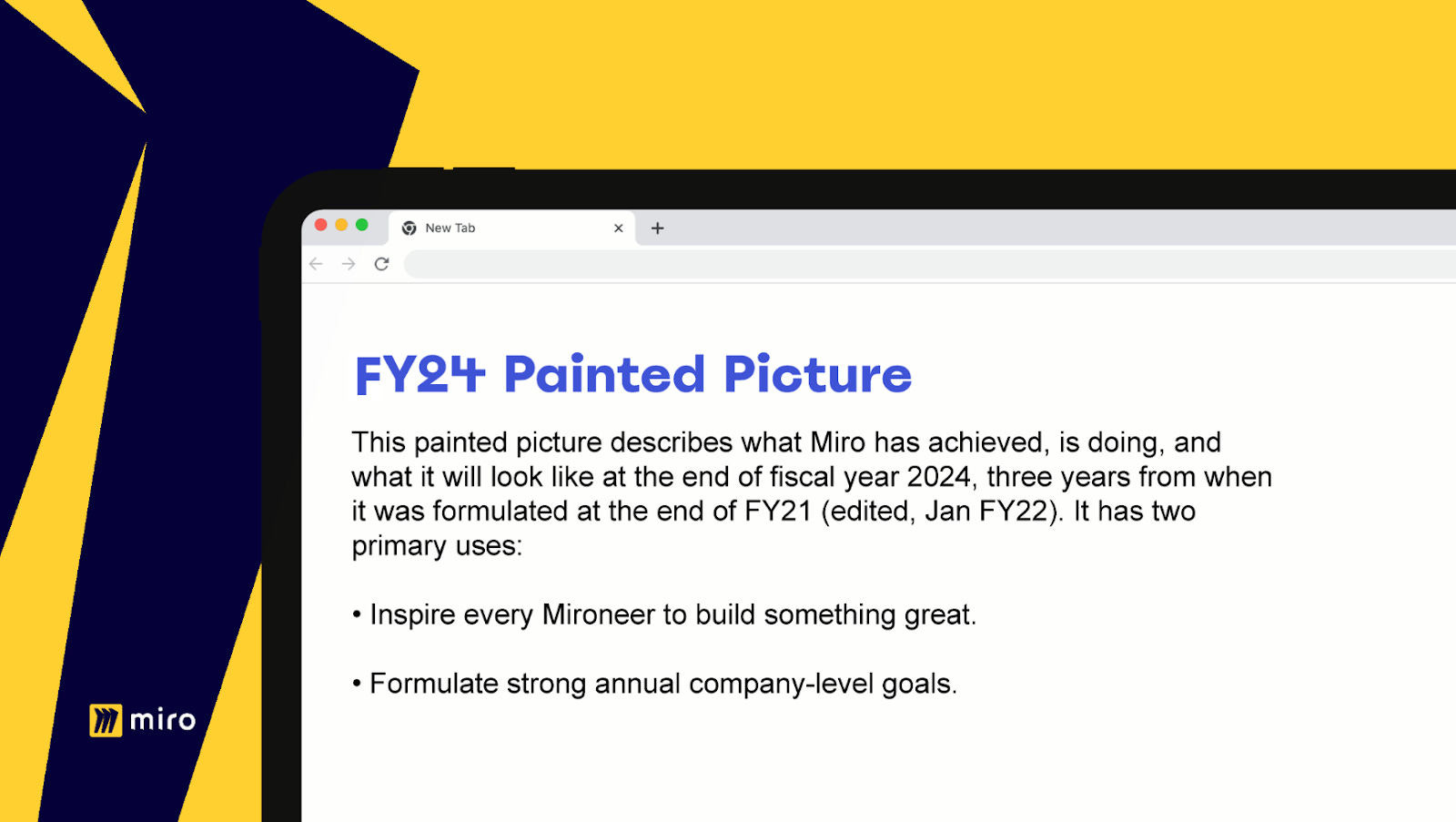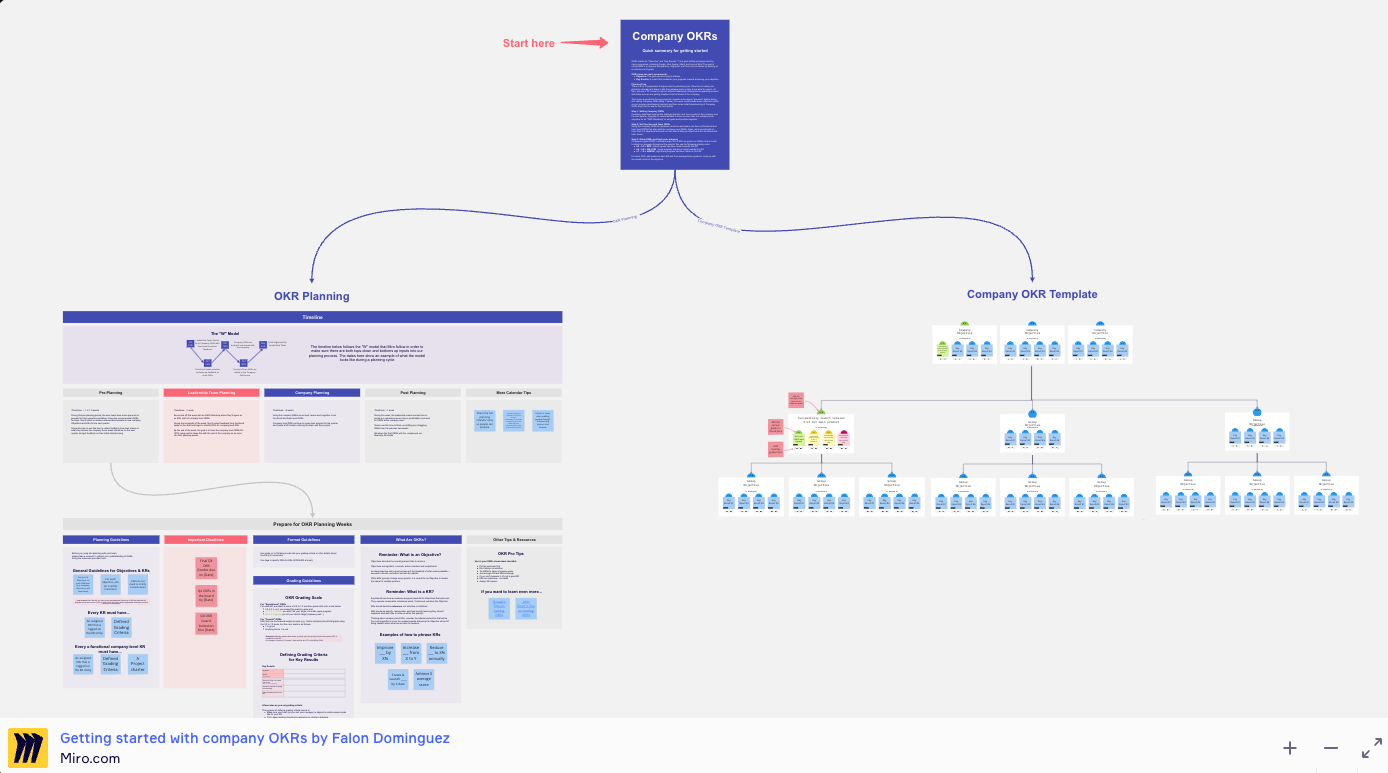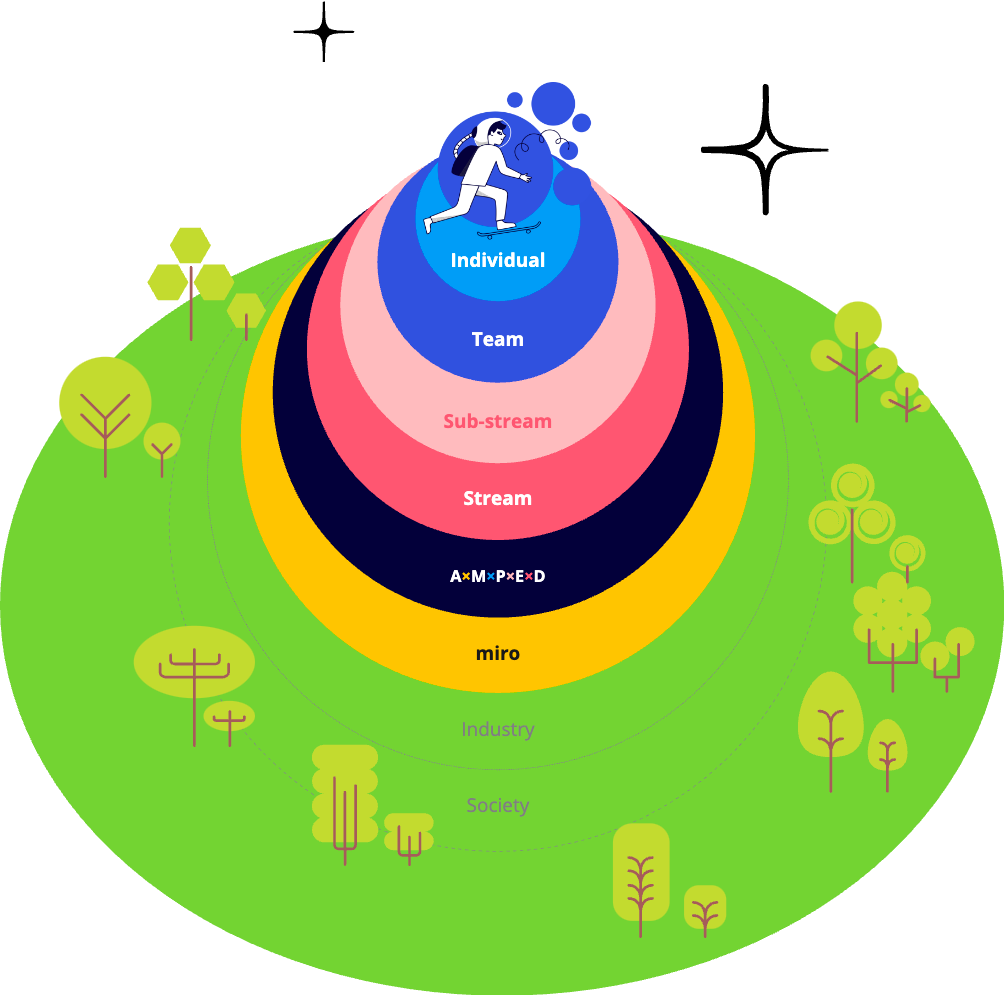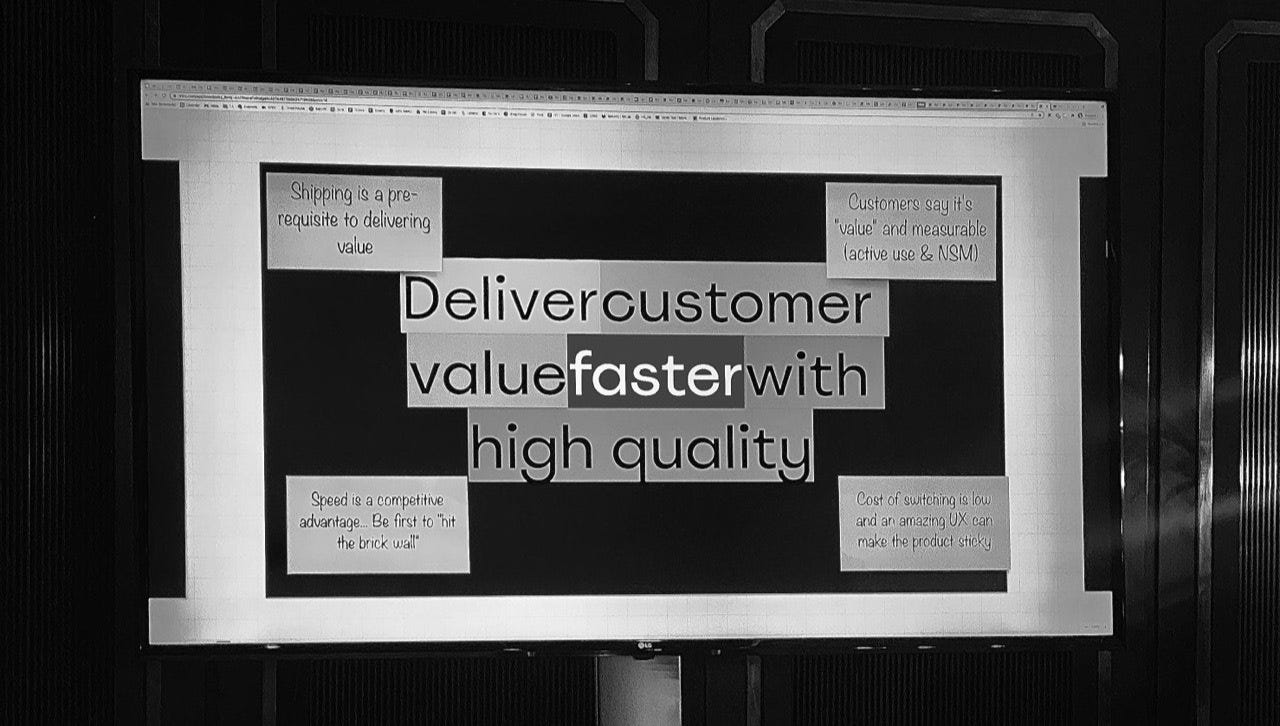Lenny's Newsletter - How Miro builds product
Below is a peek at today’s paid subscriber-only post. Subscribe today and get access to this issue—and every issue. How Miro builds productVarun Parmar, Chief Product Officer at Miro, shares what they've learned about making OKRs effective, making design reviews useful, doing planning—and tons of plug-and-play templates you can use today👋 Hey, I’m Lenny and welcome to a 🔒 subscriber-only edition 🔒 of my weekly newsletter. Each week I tackle reader questions about building product, driving growth, and accelerating your career. Varun Parmar’s podcast appearance about Miro’s unique approach to product got so much love that I knew I needed to go deeper. In part four of an ongoing series on how the best product teams build product (don’t miss Figma, Coda, and Duolingo), Varun delves into Miro’s OKR process, planning systems, design reviews, product building philosophy, and, as always, shares tons of plug-and-play templates you can start using today. With over 50 million users, and a valuation of $17.5 billion (making it one of the 10 most valuable U.S. startups), there’s a lot we can learn from Miro’s journey. What stood out to me most about Miro’s approach to product:
Thank you, Varun, for taking the time to answer so many of my questions! Enjoy. How Miro builds product1. How is the Miro product org structured?Over time, we’ve experimented with multiple organizational structures. The first structure divided the org between “Core Product” and “Growth,” which allowed each team to stay focused on one priority: delivering product features or driving growth. Then we evolved our structure to focus more on users, experimenting with use-case-focused teams to solve specific user needs and end-to-end experiences, e.g. Miro for workshops. Today the product organization is a cross-functional team composed of Analytics, (Product) Marketing, Product, Engineering, and Design—or AMPED for short. AMPED is organized into seven “product streams” aligned to the product component that each stream owns:
Each stream focuses on a set of user personas or outcomes. For example, the Enterprise stream focuses on the enterprise admin and security persona, while the Platform stream is focused on developer persona, and the Growth stream is more horizontal, focusing on specific acquisition and activation outcomes. Finally, we have common metrics across all of AMPED that are supported by multiple streams and teams. For example, improving first-time user experience is an outcome that is supported across multiple streams. What we see is that the AMPED structure brings together all required functions into the team from the get-go; they bring diverse perspectives, as well as empathy for each other and the users, resulting in a much more effective product development process. Another great example here is that Product Marketing is part of our product development process from the start. So we’re not only thinking of what to build but how to position it, how to differentiate, and how to reach the users. 2. How far out do you plan in detail, and how has that evolved over the years?At the company level, we have a “three-year painted picture,” which is a high-level picture that Miro’s Leadership Team co-develops and that defines the outcomes we want to achieve—both for our users and for Miro as a company. The painted picture is bold and ambitious, and establishes a general direction for the entire company. The painted picture informs our annual strategy, which sets the direction for the entire AMPED org for the next 12 months. We build the product strategy collaboratively in three steps, between November and January.
Each stream takes the annual strategy as input and identifies which outcomes they will support and what initiatives they will drive. Teams also identify the estimated impact of their initiatives—this is helpful when we’re trading off between different opportunities they could pursue. The identified initiatives go into our product roadmap. Our product roadmap operates on a rolling six-month cadence—we have 80% confidence in the current quarter and 50%-plus in the subsequent quarter. We used to plan just two weeks out, but this longer-term cadence allows us to be more strategic, while also being nimble and reacting to market changes. And we’ll revisit and update our product strategy mid-year based on the progress until then and the emerging market context. For example, Miro AI is in beta as of March 9, a point the team reached in just eight weeks. When changes are happening in the market or inside the company, you should be agile and ready to adjust, not trapped by your own planning. Our flexible roadmap framework allowed us to embrace this watershed moment in AI capabilities; we prioritized initiatives and secured a team that rapidly ideated, built, and deployed the features. Other key factors that helped us act fast included: people who had passion around the topic (a motivated team can do a lot!); singular focus, as we deprioritized everything else for the core AI team; and fast, almost daily iterations and standups where we tweaked things, resolved blockers, and highlighted achievements. 3. Do you use OKRs in some form?We do. And, like many other things, it is constantly evolving. We’ve improved a lot, but there’s also more work for us to do here. We used to have OKRs at each level in the organization: Company → AMPED → Product Stream → Team, and followed a quarterly planning process. It was great in theory but had many challenges. There were three big problems with this setup:
Today we represent our OKRs as a ladder framework, where companywide OKRs are the most encompassing, followed by AMPED, and then the Stream, to avoid duplication. We also reduced the set of metrics that we track. The Product stream leaders present these to me as Chief Product Officer and to our CTO, Vadim Barshtak, for review and sign-off. We have an AMPED-wide monthly traction meeting where we discuss the most important topics and try to address the challenges that we see. 4. How large is the product organization, and how many PMs do you have?AMPED is about 700 people, including over 50 PMs (and we’re hiring!). Geographically, the Product organization is based in Europe, and the go-to-market team is global. 5. What would you say is unique or core to your product team’s philosophy for building products?The Product team’s motto is “Deliver customer value faster with high quality.” The most important thing is that customers see value in what we build and deliver. It’s what we want the product teams to focus on. We spent a lot of time within the Product Leadership Team to define what we mean by each word, how we use it, and how we measure it. It’s been a good journey, but, in many ways, we are still in the early stages. For example, product quality wasn’t always meeting our bar. We needed a way to help teams build a strong sense of what is good enough. One of the product leaders came up with the “Mona Lisa principle”—simply put, everything we ship should be like a Mona Lisa painting, something we’d be proud of putting our name on. When you look at a painting, you can easily say that something is a masterpiece and something is definitely not; the same is true with the product. It was simple and super-easy to understand and use. But it still didn’t help the team get better. So we iterated, and the Design team built the monthly design reviews. Every month, they review everything that was shipped and say what is high-quality or not. You know how a picture is worth a thousand words—similarly, real examples of high quality are a lot more powerful, and simple at the same time. I think that’s what makes us unique: focusing on customers, building with empathy, and iterating for better outcomes. (By the way, these are also three of Miro’s core values.) Subscribe to Lenny's Newsletter to read the rest.Become a paying subscriber of Lenny's Newsletter to get access to this post and other subscriber-only content. A subscription gets you:
|
Older messages
Mastering paid growth | Jonathan Becker (Thrive Digital)
Sunday, May 7, 2023
Listen now (95 min) | Brought to you by Braintrust—For when you needed talent, yesterday | AssemblyAI—Production-ready AI models to transcribe and understand speech | Miro—A collaborative visual
Building a culture of excellence | David Singleton (CTO of Stripe)
Thursday, May 4, 2023
Listen now (90 min) | Brought to you by Mixpanel—Product analytics that everyone can trust, use, and afford | Eppo—Run reliable, impactful experiments | Braintrust—For when you needed talent, yesterday
How to do linear regression and correlation analysis
Tuesday, May 2, 2023
Steps, methods, tools, and use cases for locating predictable user actions and improving retention
How to achieve hypergrowth in your business and career | Carilu Dietrich (Miro, Segment, Atlassian, 1Password)
Sunday, April 30, 2023
Listen now (67 min) | Brought to you by Rows—The spreadsheet where data comes to life | Braintrust—For when you needed talent, yesterday | Coda—Meet the evolution of docs — Carilu Dietrich is a former
What jury duty taught me about product management
Tuesday, April 25, 2023
Unexpected parallels and hidden lessons about leadership and product management from my experience on a jury
You Might Also Like
🚀 Ready to scale? Apply now for the TinySeed SaaS Accelerator
Friday, February 14, 2025
What could $120K+ in funding do for your business?
📂 How to find a technical cofounder
Friday, February 14, 2025
If you're a marketer looking to become a founder, this newsletter is for you. Starting a startup alone is hard. Very hard. Even as someone who learned to code, I still believe that the
AI Impact Curves
Friday, February 14, 2025
Tomasz Tunguz Venture Capitalist If you were forwarded this newsletter, and you'd like to receive it in the future, subscribe here. AI Impact Curves What is the impact of AI across different
15 Silicon Valley Startups Raised $302 Million - Week of February 10, 2025
Friday, February 14, 2025
💕 AI's Power Couple 💰 How Stablecoins Could Drive the Dollar 🚚 USPS Halts China Inbound Packages for 12 Hours 💲 No One Knows How to Price AI Tools 💰 Blackrock & G42 on Financing AI
The Rewrite and Hybrid Favoritism 🤫
Friday, February 14, 2025
Dogs, Yay. Humans, Nay͏ ͏ ͏ ͏ ͏ ͏ ͏ ͏ ͏ ͏ ͏ ͏ ͏ ͏ ͏ ͏ ͏ ͏ ͏ ͏ ͏ ͏ ͏ ͏ ͏ ͏ ͏ ͏ ͏ ͏ ͏ ͏ ͏ ͏ ͏ ͏ ͏ ͏ ͏ ͏ ͏ ͏ ͏ ͏ ͏ ͏ ͏ ͏ ͏ ͏ ͏ ͏ ͏ ͏ ͏ ͏ ͏ ͏ ͏ ͏
🦄 AI product creation marketplace
Friday, February 14, 2025
Arcade is an AI-powered platform and marketplace that lets you design and create custom products, like jewelry.
Crazy week
Friday, February 14, 2025
Crazy week. ͏ ͏ ͏ ͏ ͏ ͏ ͏ ͏ ͏ ͏ ͏ ͏ ͏ ͏ ͏ ͏ ͏ ͏ ͏ ͏ ͏ ͏ ͏ ͏ ͏ ͏ ͏ ͏ ͏ ͏ ͏ ͏ ͏ ͏ ͏ ͏ ͏ ͏ ͏ ͏ ͏ ͏ ͏ ͏ ͏ ͏ ͏ ͏ ͏ ͏ ͏ ͏ ͏ ͏ ͏ ͏ ͏ ͏ ͏ ͏ ͏ ͏ ͏ ͏ ͏ ͏ ͏ ͏ ͏ ͏ ͏ ͏ ͏ ͏ ͏ ͏ ͏ ͏ ͏ ͏ ͏ ͏ ͏ ͏ ͏ ͏ ͏ ͏ ͏ ͏ ͏ ͏ ͏ ͏ ͏
join me: 6 trends shaping the AI landscape in 2025
Friday, February 14, 2025
this is tomorrow Hi there, Isabelle here, Senior Editor & Analyst at CB Insights. Tomorrow, I'll be breaking down the biggest shifts in AI – from the M&A surge to the deals fueling the
Six Startups to Watch
Friday, February 14, 2025
AI wrappers, DNA sequencing, fintech super-apps, and more. ͏ ͏ ͏ ͏ ͏ ͏ ͏ ͏ ͏ ͏ ͏ ͏ ͏ ͏ ͏ ͏ ͏ ͏ ͏ ͏ ͏ ͏ ͏ ͏ ͏ ͏ ͏ ͏ ͏ ͏ ͏ ͏ ͏ ͏ ͏ ͏ ͏ ͏ ͏ ͏ ͏ ͏ ͏ ͏ ͏ ͏ ͏ ͏ ͏ ͏ ͏ ͏ ͏ ͏ ͏ ͏ ͏ ͏ ͏ ͏ ͏ ͏ ͏ ͏ ͏ ͏ ͏ ͏ ͏ ͏ ͏
How Will AI-Native Games Work? Well, Now We Know.
Friday, February 14, 2025
A Deep Dive Into Simcluster ͏ ͏ ͏ ͏ ͏ ͏ ͏ ͏ ͏ ͏ ͏ ͏ ͏ ͏ ͏ ͏ ͏ ͏ ͏ ͏ ͏ ͏ ͏ ͏ ͏ ͏ ͏ ͏ ͏ ͏ ͏ ͏ ͏ ͏ ͏ ͏ ͏ ͏ ͏ ͏ ͏ ͏ ͏ ͏ ͏ ͏ ͏ ͏ ͏ ͏ ͏ ͏ ͏ ͏ ͏ ͏ ͏ ͏ ͏ ͏ ͏ ͏ ͏ ͏ ͏ ͏ ͏ ͏ ͏ ͏ ͏ ͏ ͏ ͏ ͏ ͏ ͏ ͏ ͏ ͏ ͏ ͏ ͏ ͏ ͏ ͏ ͏


